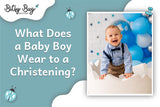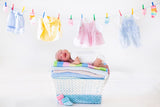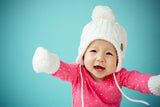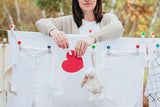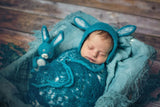Newborn Dressing Guide
Are you going to be a parent soon and want to know what to wear to your baby? Here’s a newborn dressing guide!
In this guide, we will go over the basics of how to dress a newborn baby, including choosing appropriate clothing, safe practices, and other considerations.
By following the tips mentioned below, parents can ensure that their baby is comfortable and safe, allowing them to focus on the joy of caring for their little bundle of joy.
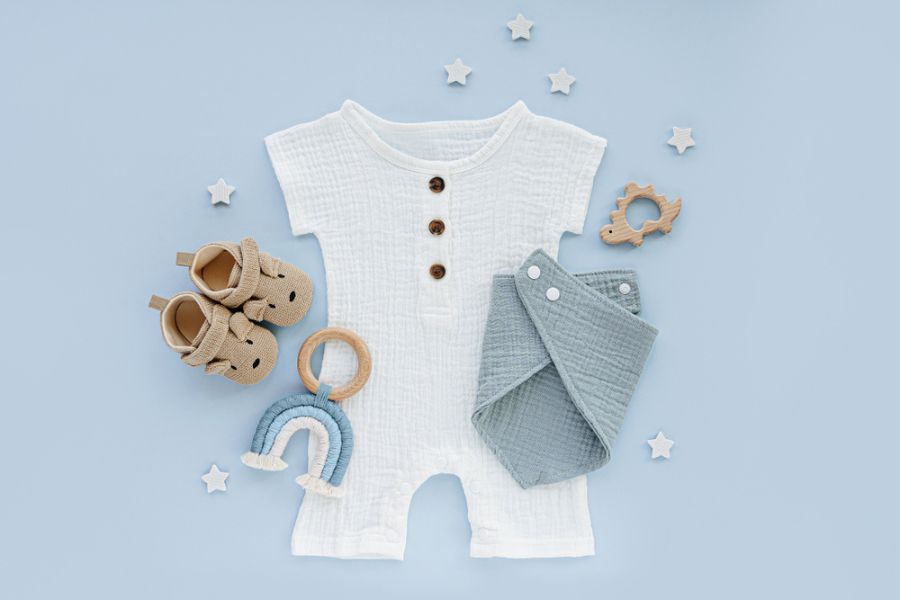
Source: shutterstock.com / Photo Contributor: Igisheva Maria
Newborn Dressing Guide
In addition to practicality, many parents enjoy dressing their newborns in cute, stylish outfits. If you are one of those, we warmly recommend checking out our trendy newborn baby girl clothes collection!
Baby clothes should always be comfortable, safe, and practical, with features such as snap closures, elastic waistbands, and soft, breathable fabrics.
When deciding how to dress up your baby, consider the most common options, including onesies, sleepers, and pants.
Basics
- Onesies - a staple piece in any newborn’s wardrobe and are great for layering
- Sleepers - footed pajamas that cover the feet and are perfect for breezy weather and nighttime
- Rompers and bodysuits - one-piece outfits covering the torso and allowing babies easy movement
- Pants - great for keeping a baby’s legs warm and are usually paired with a onesie or a shirt
- Hats - essential for keeping a newborn’s head warm, especially in cooler weather
- Mittens - great for preventing the baby from scratching their face with their sharp nails
- Socks and booties - essential for keeping the feet warm
In addition to these basics, when dressing up a newborn baby, it is essential to prioritize their comfort and safety. Below in this guide, we mention some key things to consider.
Choosing the right size
When buying clothing for a newborn, it's important to choose the right size.
Newborn sizes usually include babies up to seven pounds, but some babies may outgrow these sizes quickly.
By following this guide, you can choose the right size for your newborn baby and ensure they are comfortable in their clothing.
Check the weight and height
Newborn clothing is typically sized based on weight, so it is a good idea to know your baby’s weight before purchasing clothes. You can also check their height to ensure the clothes fit well.
Most clothing brands provide size charts to help you determine the appropriate size based on weight and height.
Consider a variety of sizes
Babies grow quickly, so it is a good idea to have a range of sizes on hand, including newborns, 0-3 months, and 3-6 months. This will ensure that you have clothes as your baby grows.

Source: shutterstock.com / Photo Contributor: Africa Studio
Consider the brand
Different brands may have different sizing standards, so it's a good idea to try a few different brands to see what fits the best.
Choosing stretchy fabrics
Clothes made from stretchy fabrics, such as cotton or spandex, can be more forgiving regarding sizing.
Such fabrics can stretch to fit your baby’s body, so it may last longer than clothes made from non-stretchy materials.
Keep the season in mind
If your baby is due in the winter, you should buy a larger size to accommodate layers of warm clothing.
If your baby is due in the summer, consider buying fitting, lighter, and cooler sizes.
Comfort
Newborns have delicate skin, so choosing soft, breathable fabrics that will not irritate their skin is essential. Cotton and other natural fibers are good choices.
Ensure the clothes fit well, are neither tight nor loose, and allow easy baby movement.
Accessibility
Dressing a newborn baby can be challenging, especially when they are squirming or crying.
Always look for clothes that are easy to put on and take off, with snaps, zippers, or other closures that allow you to access the diaper area quickly.
Weather - appropriateness
Consider the weather and temperature when choosing clothes for your baby.
Dress your baby in layers that can be easily removed or added as needed. Avoid overdressing or underdressing your baby, which can lead to discomfort or even illness.
Functionality
Think about the purpose of the clothing. For example, choose onesies with wide neck openings to make it easier to wear the baby.
Look for clothes that are easy to clean and can withstand frequent washing.
Safety considerations
When dressing a newborn, safety should always be the top priority. In this newborn dressing guide are some important safety considerations to remember.
Avoid loose clothing
Loose clothing can pose a suffocation risk for newborns, so choosing clothing that fits well is important.

Source: shutterstock.com / Photo Contributor: Natalia Deriabina
Choose fire-retardant clothing
Look for clothing labeled as flame-retardant to reduce the fire risk.
Avoid drawstrings
Clothing with drawstrings can pose a strangulation risk, so it’s best to avoid them.
Check for overheating
Overheating can be dangerous for newborns, so it’s important to monitor their temperature and ensure they are not too hot.
Additional Tips for Dressing a Newborn
Keep it simple
Newborns don't need a lot of clothing, so it is wisest to keep it simple.
Stick to basics like onesies and sleepers, and avoid complicated outfits with lots of buttons and snaps.
Don’t forget the diaper
When dressing a newborn, it's important to ensure the diaper is properly fastened and not too tight or loose.
Be prepared for a diaper change
Diaper changes are frequent in the first few weeks of a newborn’s life, so it is crucial to have a few extra onesies and sleepers on hand in case of accidents.
Take your time
Dressing a newborn baby can be tricky, especially if you are new to it. Take your time and be gentle with your baby.

Source: shutterstock.com / Photo Contributor: Ulza
Conclusion
Dressing a newborn baby can be challenging for new parents, but following the tips in this newborn dressing guide can become a comfortable routine.
Newborns are susceptible, and choosing the materials very wisely is crucial. Soft, non-irritating materials are the best choice. It is essential to choose comfortable and breathable clothing that is appropriate for the weather and easy to put on and take off.
Always consider the clothing size; as newborns overgrow, clothing can be uncomfortable and restrict their movement. It is vital to have various clothing options available, including onesies, sleepers, and hats, to accommodate different temperatures and activities.
Parents should also practice safe sleep by ensuring the baby’s clothing is not too loose or tight and avoiding any loose bedding or accessories in the crib.
Following this newborn dressing guide, parents can ensure their baby is comfortable, safe, and well-dressed.


